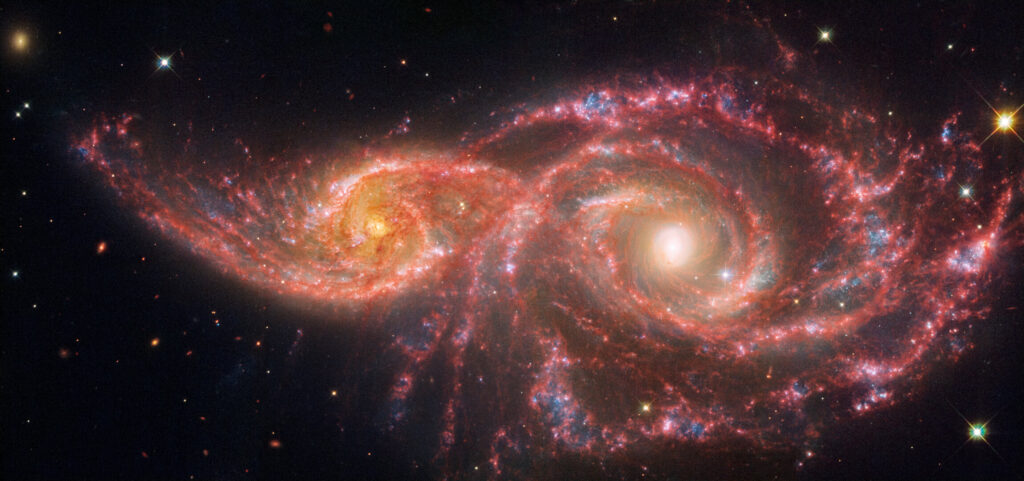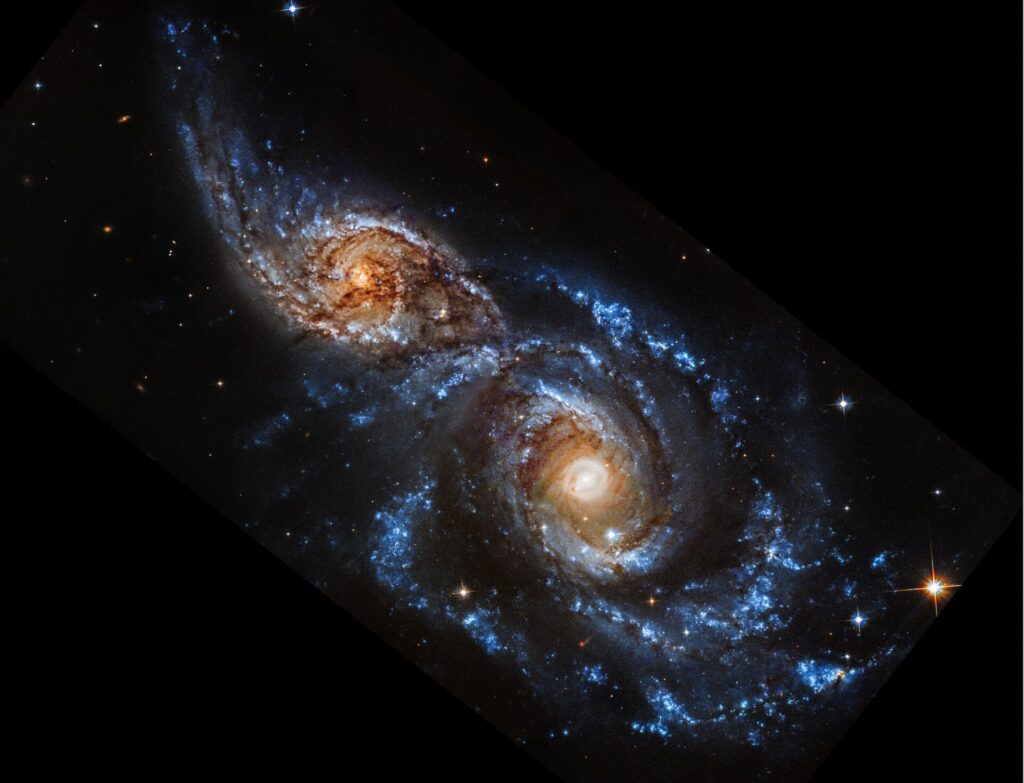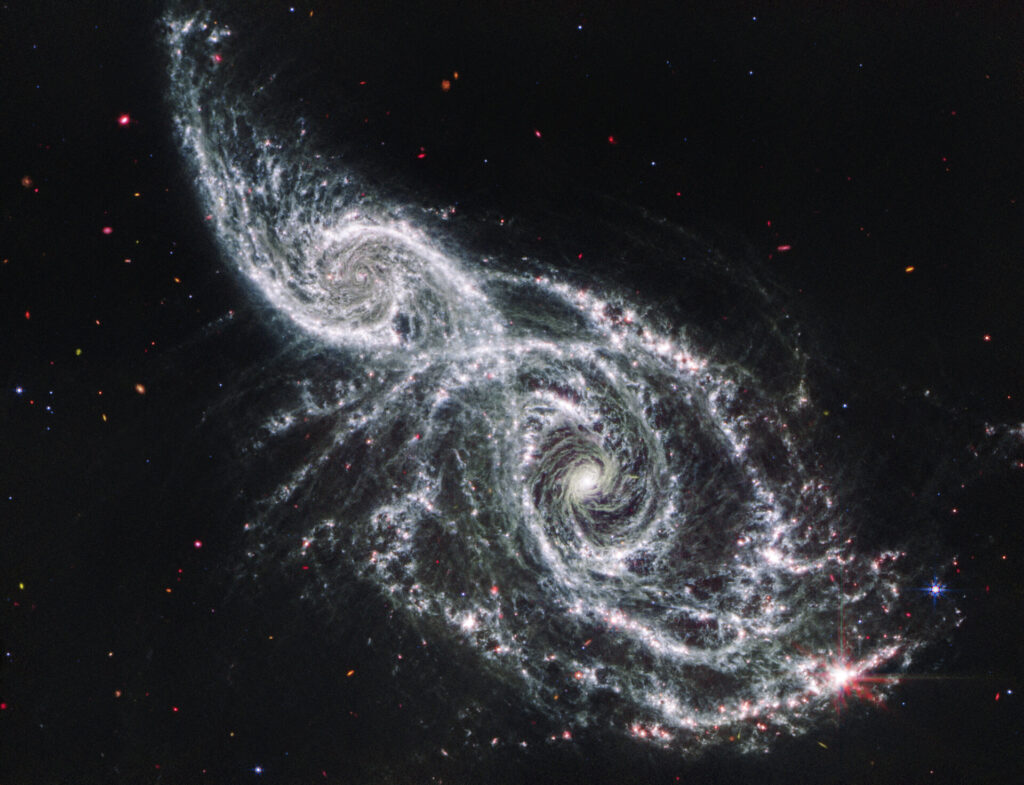In honor of Halloween, scientists from NASA and ESA have published a frightening image. It shows something resembling a face with a pair of flaming eyes, whose eerie gaze is staring into the cosmic darkness.

The photo actually shows a pair of interacting spiral galaxies, IC 2163 (left) and NGC 2207 (right), located 115 million light-years away from Earth. It was obtained from observations made by the James Webb telescope in the mid-infrared and the Hubble telescope in the visible and ultraviolet.
IC 2163 and NGC 2207 are in the process of a kind of gravitational dance. 40 million years ago, the galaxies converged, which gave rise to the observed pattern. The forces of gravitational interaction pulled their graceful spiral arms out. Some of their substance formed tiny structures resembling tendrils connecting the arms to the nuclei. Another part was ripped outside galaxies and formed tidal tails whose length extends 100,000 light-years.

Interactions between galaxies also caused their matter to compact, triggering a burst of star formation. Every year, galaxies give birth to the equivalent of two dozen new stars the size of the Sun. For comparison, only two or three new stars resembling our own are formed in the Milky Way in a year. Black holes located in the centers of both galaxies also received a “ feeding ”, which led to an increase in their activity.

In addition, there have been seven known supernovae outbreaks in both galaxies in recent decades — the last known supernova in the Milky Way erupted in the late 19th century. According to astronomers, their explosions may have cleared space in the arms of galaxies, regrouping gas and dust that later cooled and helped many new stars form.
What’s next for these spirals? Over the next million years, galaxies may pass close to each other several more times. Then, they will merge together, causing the final destruction of their original spiral structures and the formation of a single core, which will initially be very bright. Then, after the newborn galaxy has exhausted its supply of gas and dust, the rate of star formation in it will slow down, and the picture will settle down and become more familiar.
Earlier we told you about how the Hubble telescope photographed a comet-like galaxy.
Provided by ESA


